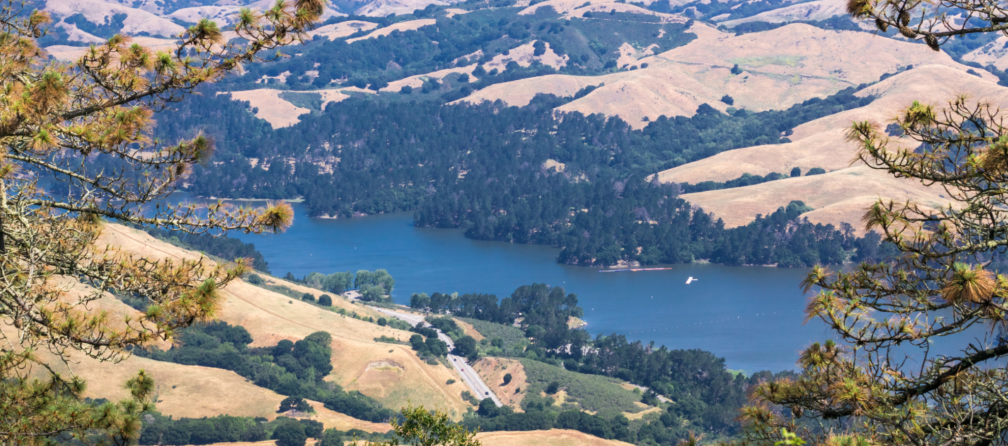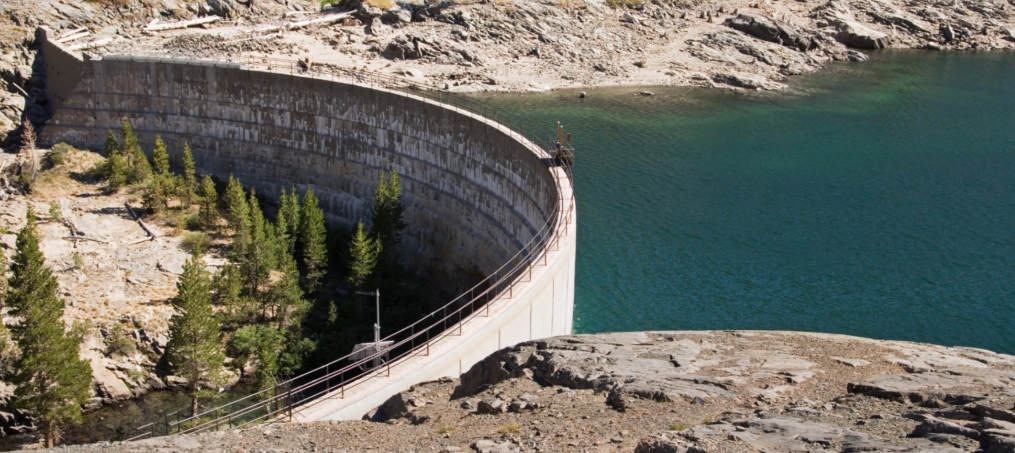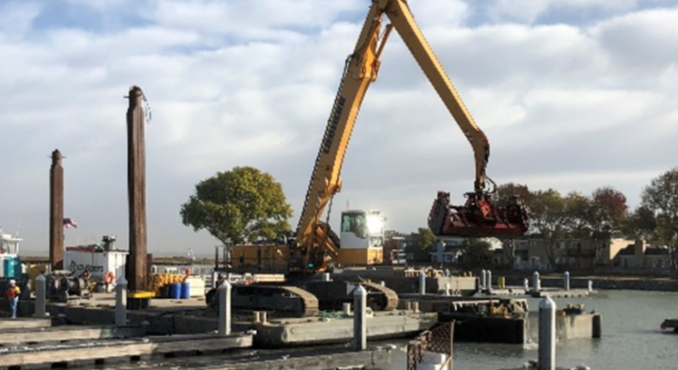Solving Sedimentation and Water Quality Issues with Aging Infrastructure
From reservoirs and wells to dams and artificial lakes, owners and operators across the country are struggling to maintain water infrastructure. These structures are critical to communities and are often essential sources of water, recreation, and wildlife habitat. As water infrastructure ages, monitoring and addressing potential sedimentation and water quality issues is vital.
Sediment accumulates over time as runoff carries sediment into lakes and reservoirs caused by both natural erosion and urban development. This accumulation creates a multitude of problems by reducing the capacity of the water body to retain and reserve water, ultimately affecting the infrastructure’s ability to serve as flood control or emergency water supply uses for wildfires.

When runoff carries sediment into lakes and reservoirs, it can build up and dramatically reduce water capacity—posing a threat to important sources of drinking water, recreation, wildlife habitat, and even flood control.
As an infrastructure’s capacity is diminished, water flow decreases and water treatment costs increase. This is because as a reservoir becomes shallower due to sedimentation, water temperatures rise, creating an unhealthy environment where toxins and algae build up. This reduction in depth or the introduction of nutrients is negatively affecting the water quality. Runoff from wildfires or urbanization can also directly introduce contaminants into the lake, which accumulate and eventually degrade water quality.
These toxins also interfere with municipal, agricultural, and recreational uses, often requiring swimming or fishing to be temporarily banned. For example, an artificial lake constructed in the 1800s in California was used for recreation and flood control. The lake was originally 60-80 feet deep, but now is less than 15 feet deep due to urbanization and sedimentation. Additionally, the toxins in the runoff from development accumulate in the sediment, which causes the toxins from development runoff, causing the lake to be closed to pets and fishing.

With dams, reservoirs, and lakes, the reduction in depth or the introduction of nutrients or contaminants affect the water quality and can cause nuisance vegetation and toxic algae to grow.
Many aging dams are also impacted by sedimentation, causing instability and weakening of the infrastructure, especially when the sediment is built up on one side of the dams. Removing the sediment may create unanticipated structural problems if the dam has started to rely on the settled sediment for stability. And if a dam was not designed with this in mind, there is likely little space for dredging or other equipment to remove the sediment or even access the structure. Similarly, many aging reservoirs weren’t built with a mechanism to remove the sediment loads from upstream development.
Tackling Sedimentation Problems and Environmental Planning
Water infrastructure owners can tackle sedimentation problems through various services that include aid with geotechnical and environmental evaluations, planning and permitting, engineering solutions, funding, construction implementation, and long-term maintenance. The first step is to do a feasibility study to identify the problem, often including the collection of exploratory sediment cores and lab testing to determine the chemical makeup of the sediment itself. Then, a geological assessment is conducted of the existing dam. With this information, a variety of solutions may be proposed on case-by-case basis—including some of the following options:
Dredging
Dredging ultimately restores water depth by removing mass amounts of sediment from the infrastructure. Dredging solutions require a place to process and store the dredged sediment, presenting more options for how to use or dispose of the material. One option is to beneficially reuse the dredged sediment and leave it on–site as a modified recreational feature rather than trucking it to another location; occasionally the dredged material can be useful at another nearby location. Hauling the sediment to a landfill for disposal is typically a last resort due to the high cost. In one project Anchor QEA worked on for a reservoir in California, our team collaborated with an adjacent landowner and deposited the sediment in an orchard. Beneficially reusing the dredged material enabled us to cut down on transportation and disposal costs since the amount of sediment that was excavated would have required over 10,000 truck trips.
Installing Treatment Wetlands
Constructed wetlands are treatment systems that use natural processes to improve water quality. Treatment wetlands remove the nutrients from effluent or runoff before they can enter a lake or other surface water body in the first place.
Creating or Expanding Sediment Catchment Basins
The purpose of creating or expanding sediment basins, or forebays, is to intercept the sediment before it enters the lake. These sediment traps act as settling ponds and retain the runoff for a sufficient long enough for most of the sediment particles to settle out. It is much more cost effective to remove the sediment from those basins rather than dredging from the lake or reservoir itself.
Other Complete Sediment Removal Options
Another solution that may be more feasible for a reservoir that supplies drinking water is to drain the area of water before complete sediment removal, enabling workers to use land-based equipment such as excavators and dozers instead of traditional, water-based dredging equipment.

Dredging options range from hydraulic or mechanical dredges, and at geotextile tubes to dewater the sediment once it is removed.
Each aspect of all proposed solutions is compared in the initial feasibility study for the infrastructure operator or district to review. After a solution is chosen, funding is obtained and permitting and environmental investigations are addressed. Owners often underestimate the time the regulatory process requires and the steps involved in a sediment management project. Environmental investigations can include a variety of steps, from archeological investigations to habitat investigations, which can encompass studying aquatic life, bird monitoring, sediment testing, and geological testing.
Each facet requires meticulous planning at the beginning of a project, calling for many strategic partners and experts to work well together to tackle each aspect. Dams, reservoirs, and other water infrastructure are continuing to be designed for effortless maintenance, with forebays and basins to promote routine, cost-effective sediment cleanout. This evolution of water infrastructure in the future will enable owners and operators to support their communities and maintain a healthy environment in the future.

